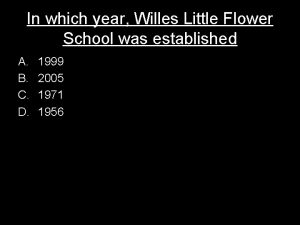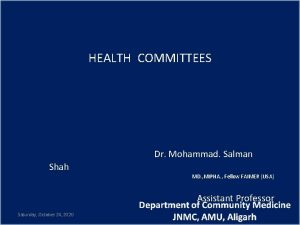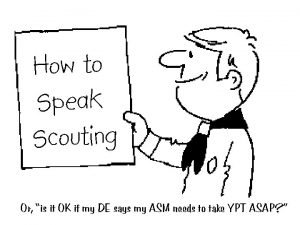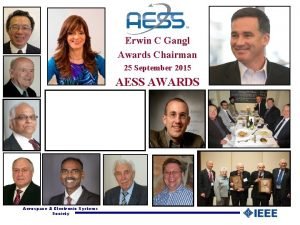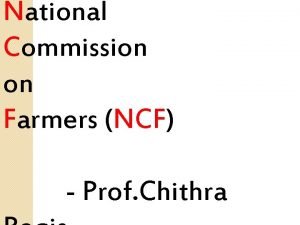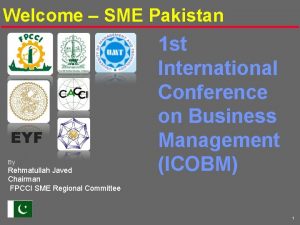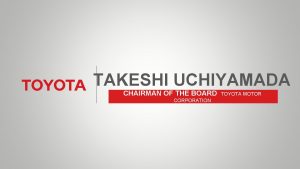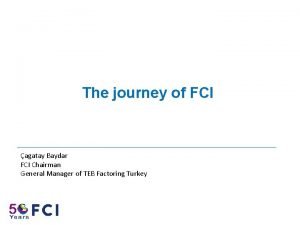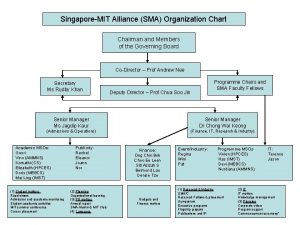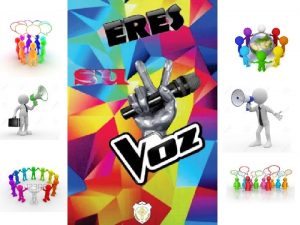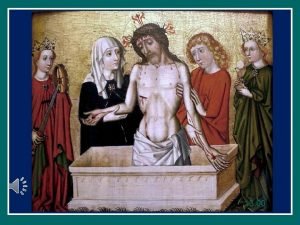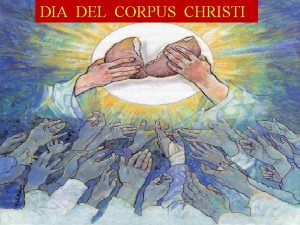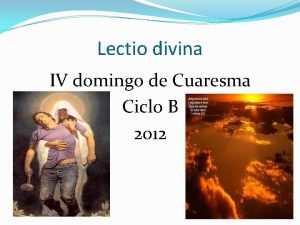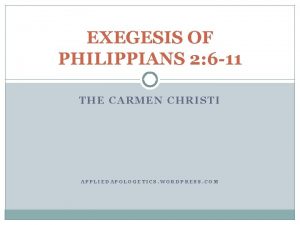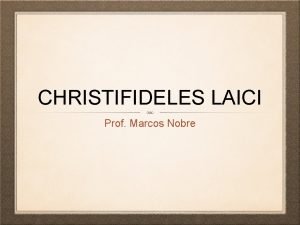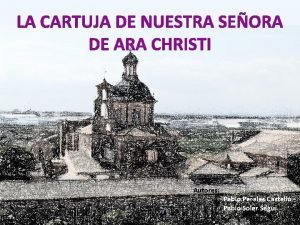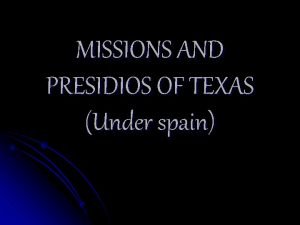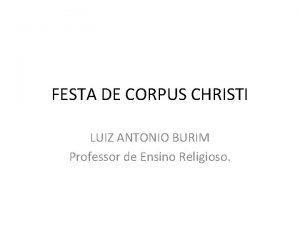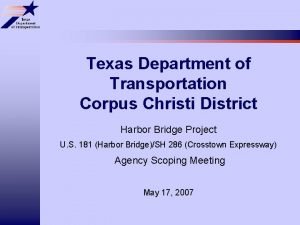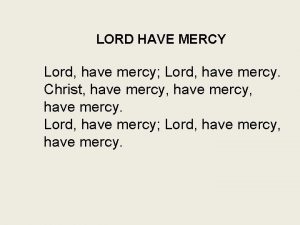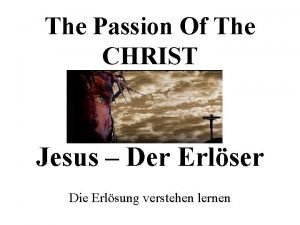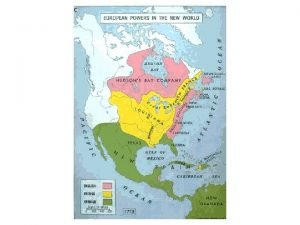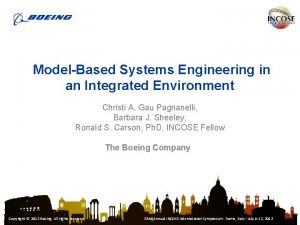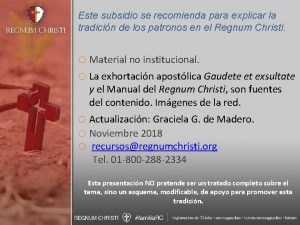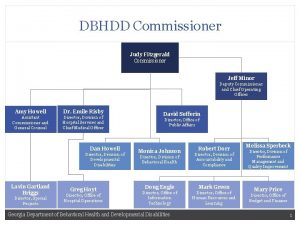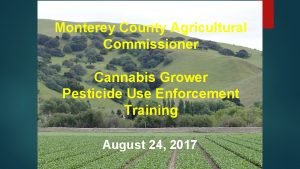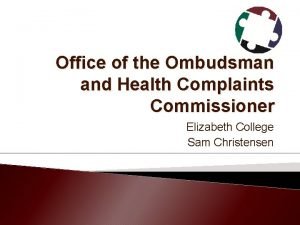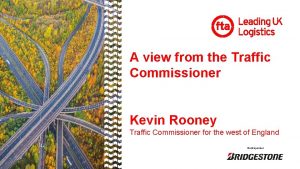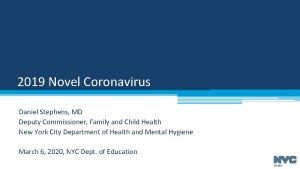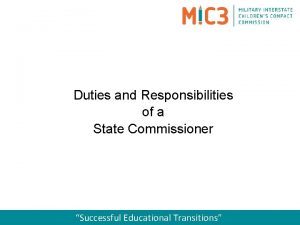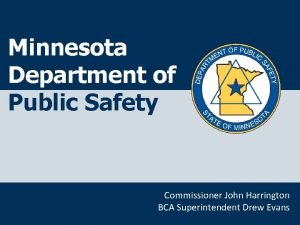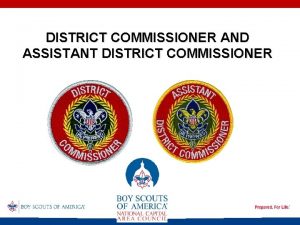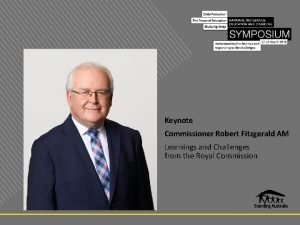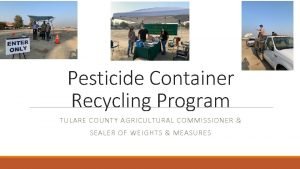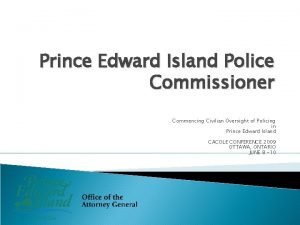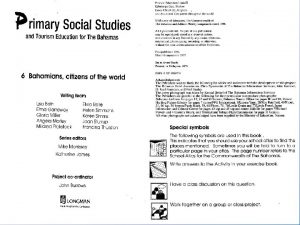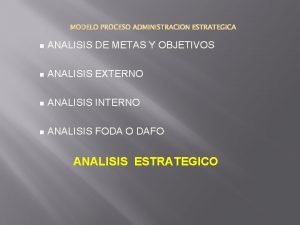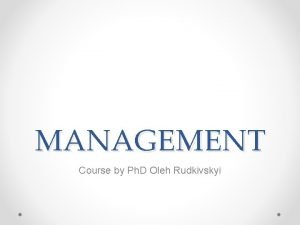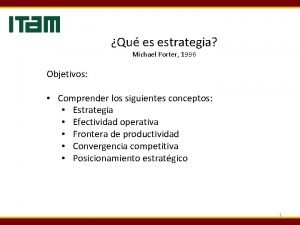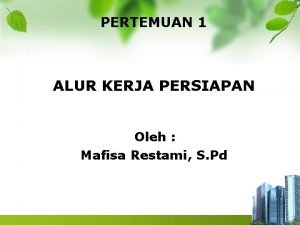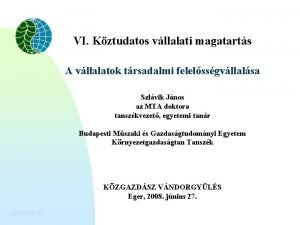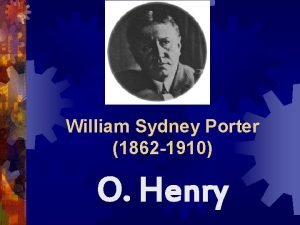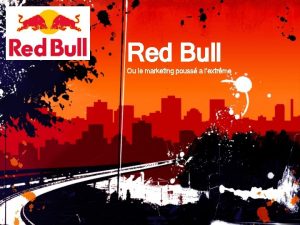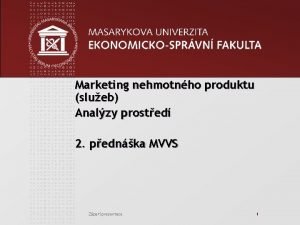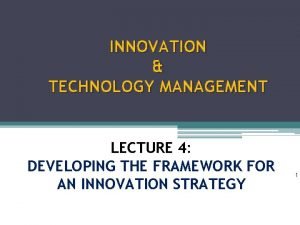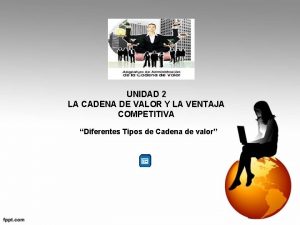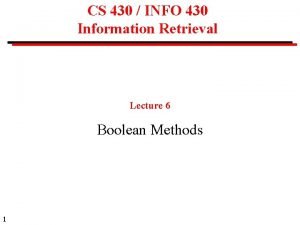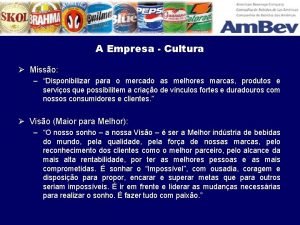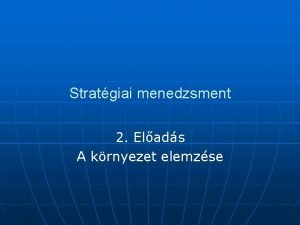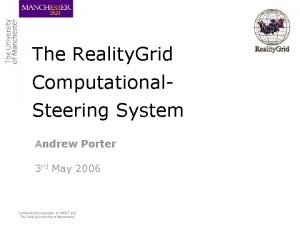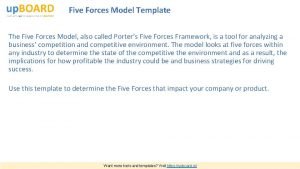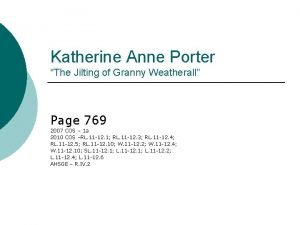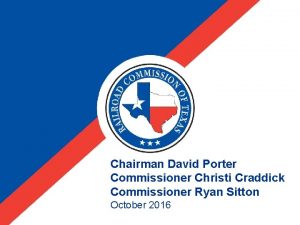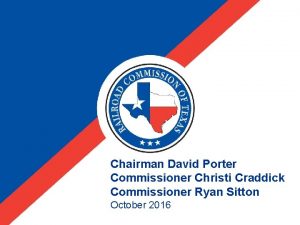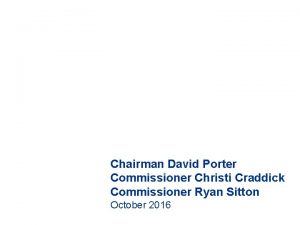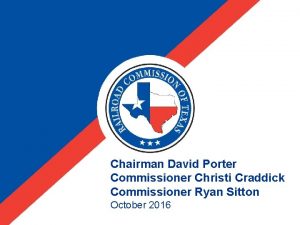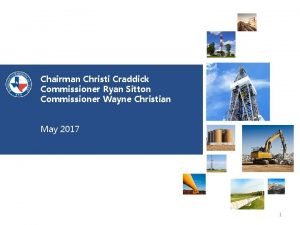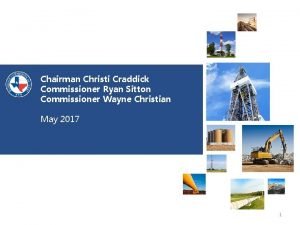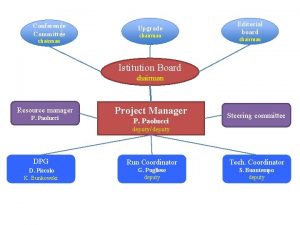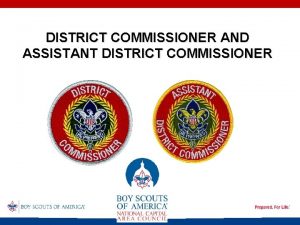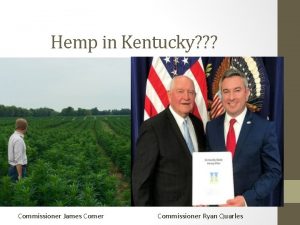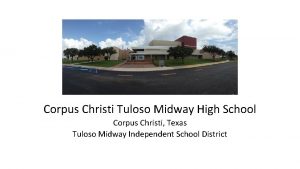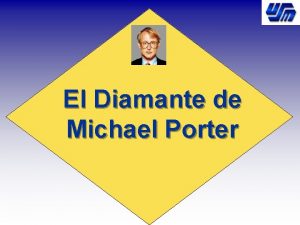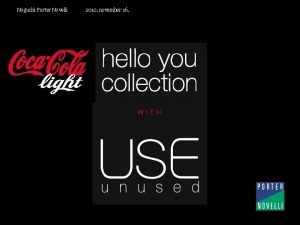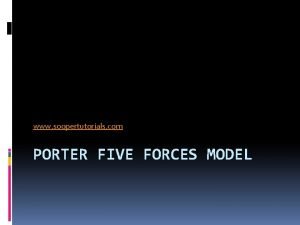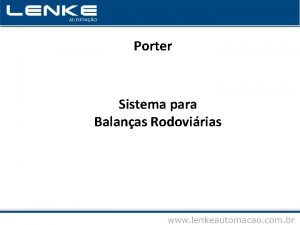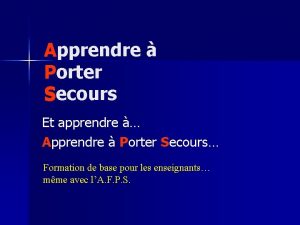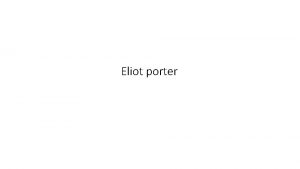Chairman David Porter Commissioner Christi Craddick Commissioner Ryan





![CNG-LNG Rules Workshop § 13. 1. Applicability, Severability, and Retroactivity [Scope]. (f) [(c)] This CNG-LNG Rules Workshop § 13. 1. Applicability, Severability, and Retroactivity [Scope]. (f) [(c)] This](https://slidetodoc.com/presentation_image_h/78a13ecb38f6b862a7d969d993d32b97/image-6.jpg)
![CNG-LNG Rules Workshop § 13. 1. Applicability, Severability, and Retroactivity [Scope]. (f) [(c)] This CNG-LNG Rules Workshop § 13. 1. Applicability, Severability, and Retroactivity [Scope]. (f) [(c)] This](https://slidetodoc.com/presentation_image_h/78a13ecb38f6b862a7d969d993d32b97/image-7.jpg)
![CNG-LNG Rules Workshop § 13. 3. Definitions. (14) [(13)] CNG system--A system of safety CNG-LNG Rules Workshop § 13. 3. Definitions. (14) [(13)] CNG system--A system of safety](https://slidetodoc.com/presentation_image_h/78a13ecb38f6b862a7d969d993d32b97/image-8.jpg)
![CNG-LNG Rules Workshop § 13. 3. Definitions. (14) [(13)] CNG system--A system of safety CNG-LNG Rules Workshop § 13. 3. Definitions. (14) [(13)] CNG system--A system of safety](https://slidetodoc.com/presentation_image_h/78a13ecb38f6b862a7d969d993d32b97/image-9.jpg)






![CNG-LNG Rules Workshop § 13. 24. [Filings Required for] School Bus, Public Transportation, Mass CNG-LNG Rules Workshop § 13. 24. [Filings Required for] School Bus, Public Transportation, Mass](https://slidetodoc.com/presentation_image_h/78a13ecb38f6b862a7d969d993d32b97/image-16.jpg)
![CNG-LNG Rules Workshop § 13. 25. Filings Required for Stationary CNG Installations. (c) [(f)] CNG-LNG Rules Workshop § 13. 25. Filings Required for Stationary CNG Installations. (c) [(f)]](https://slidetodoc.com/presentation_image_h/78a13ecb38f6b862a7d969d993d32b97/image-17.jpg)
![CNG-LNG Rules Workshop § 13. 25. Filings Required for Stationary CNG Installations. (c) [(f)] CNG-LNG Rules Workshop § 13. 25. Filings Required for Stationary CNG Installations. (c) [(f)]](https://slidetodoc.com/presentation_image_h/78a13ecb38f6b862a7d969d993d32b97/image-18.jpg)






![CNG-LNG Rules Workshop § 13. 93. System Protection Requirements [General]. (f) At least two CNG-LNG Rules Workshop § 13. 93. System Protection Requirements [General]. (f) At least two](https://slidetodoc.com/presentation_image_h/78a13ecb38f6b862a7d969d993d32b97/image-25.jpg)
![CNG-LNG Rules Workshop § 13. 93. System Protection Requirements [General]. (f) At least two CNG-LNG Rules Workshop § 13. 93. System Protection Requirements [General]. (f) At least two](https://slidetodoc.com/presentation_image_h/78a13ecb38f6b862a7d969d993d32b97/image-26.jpg)
![CNG-LNG Rules Workshop § 13. 107. Dispenser Installation [Accuracy]. CNG-LNG Rules Workshop § 13. 107. Dispenser Installation [Accuracy].](https://slidetodoc.com/presentation_image_h/78a13ecb38f6b862a7d969d993d32b97/image-27.jpg)
![CNG-LNG Rules Workshop § 13. 107. Dispenser Installation [Accuracy]. (b) The dispenser shall have CNG-LNG Rules Workshop § 13. 107. Dispenser Installation [Accuracy]. (b) The dispenser shall have](https://slidetodoc.com/presentation_image_h/78a13ecb38f6b862a7d969d993d32b97/image-28.jpg)
![CNG-LNG Rules Workshop § 13. 107. Dispenser Installation [Accuracy]. (e) Fuel dispenser(s), including automatic CNG-LNG Rules Workshop § 13. 107. Dispenser Installation [Accuracy]. (e) Fuel dispenser(s), including automatic](https://slidetodoc.com/presentation_image_h/78a13ecb38f6b862a7d969d993d32b97/image-29.jpg)


![CNG-LNG Rules Workshop § 13. 133. Installation of Fuel Supply Containers [Cylinders]. (a) [(b)] CNG-LNG Rules Workshop § 13. 133. Installation of Fuel Supply Containers [Cylinders]. (a) [(b)]](https://slidetodoc.com/presentation_image_h/78a13ecb38f6b862a7d969d993d32b97/image-32.jpg)
![CNG-LNG Rules Workshop § 13. 133. Installation of Fuel Supply Containers [Cylinders]. (a) [(b)] CNG-LNG Rules Workshop § 13. 133. Installation of Fuel Supply Containers [Cylinders]. (a) [(b)]](https://slidetodoc.com/presentation_image_h/78a13ecb38f6b862a7d969d993d32b97/image-33.jpg)
![CNG-LNG Rules Workshop § 13. 133. Installation of Fuel Supply Containers [Cylinders]. (b) [(m)] CNG-LNG Rules Workshop § 13. 133. Installation of Fuel Supply Containers [Cylinders]. (b) [(m)]](https://slidetodoc.com/presentation_image_h/78a13ecb38f6b862a7d969d993d32b97/image-34.jpg)
![CNG-LNG Rules Workshop § 13. 133. Installation of Fuel Supply Containers [Cylinders]. (b) [(m)] CNG-LNG Rules Workshop § 13. 133. Installation of Fuel Supply Containers [Cylinders]. (b) [(m)]](https://slidetodoc.com/presentation_image_h/78a13ecb38f6b862a7d969d993d32b97/image-35.jpg)











![CNG-LNG Rules Workshop § 13. 72. Designation and Responsibilities of Company Representative and [of] CNG-LNG Rules Workshop § 13. 72. Designation and Responsibilities of Company Representative and [of]](https://slidetodoc.com/presentation_image_h/78a13ecb38f6b862a7d969d993d32b97/image-47.jpg)
![CNG-LNG Rules Workshop § 13. 72. Designation and Responsibilities of Company Representative and [of] CNG-LNG Rules Workshop § 13. 72. Designation and Responsibilities of Company Representative and [of]](https://slidetodoc.com/presentation_image_h/78a13ecb38f6b862a7d969d993d32b97/image-48.jpg)
![CNG-LNG Rules Workshop § 13. 72. Designation and Responsibilities of Company Representative and [of] CNG-LNG Rules Workshop § 13. 72. Designation and Responsibilities of Company Representative and [of]](https://slidetodoc.com/presentation_image_h/78a13ecb38f6b862a7d969d993d32b97/image-49.jpg)

![CNG-LNG Rules Workshop § 13. 133. Installation of Fuel Supply Containers [Cylinders]. [(a) Fuel CNG-LNG Rules Workshop § 13. 133. Installation of Fuel Supply Containers [Cylinders]. [(a) Fuel](https://slidetodoc.com/presentation_image_h/78a13ecb38f6b862a7d969d993d32b97/image-51.jpg)









- Slides: 60

Chairman David Porter Commissioner Christi Craddick Commissioner Ryan Sitton November 2016

Regulations for CNG and LNG Workshop November 8, 2016 Oversight and Safety Division Alternative Fuels Safety Department April Richardson

CNG-LNG Rules Workshop In case of Evacuation… Restrooms and Water Fountain Workshop scheduled 9: 00 – 11: 00

CNG-LNG Rules Workshop • Agenda – Review proposed rule change comments for CNG, starting with those that resulted in modifications to proposed language. – Review proposed rule change comments for LNG, starting with those that resulted in modifications to proposed language. – Open Discussion

CNG-LNG Rules Workshop Comments on proposed changes to Chapter 13 Regulations for Compressed Natural Gas
![CNGLNG Rules Workshop 13 1 Applicability Severability and Retroactivity Scope f c This CNG-LNG Rules Workshop § 13. 1. Applicability, Severability, and Retroactivity [Scope]. (f) [(c)] This](https://slidetodoc.com/presentation_image_h/78a13ecb38f6b862a7d969d993d32b97/image-6.jpg)
CNG-LNG Rules Workshop § 13. 1. Applicability, Severability, and Retroactivity [Scope]. (f) [(c)] This [Subchapters A, B, C, D, E, and F of this] chapter shall not apply to vehicles and fuel supply containers that: (1) are manufactured or installed by original equipment manufacturers; (2) comply with Title 49, Code of Federal Regulations, the Federal Motor Vehicle Safety Standards; and (3) comply with the National Fire Protection Association (NFPA) Code 52, [Compressed Natural Gas (CNG)] Vehicular Gaseous Fuel Systems Code.
![CNGLNG Rules Workshop 13 1 Applicability Severability and Retroactivity Scope f c This CNG-LNG Rules Workshop § 13. 1. Applicability, Severability, and Retroactivity [Scope]. (f) [(c)] This](https://slidetodoc.com/presentation_image_h/78a13ecb38f6b862a7d969d993d32b97/image-7.jpg)
CNG-LNG Rules Workshop § 13. 1. Applicability, Severability, and Retroactivity [Scope]. (f) [(c)] This [Subchapters A, B, C, D, E, and F of this] chapter shall not apply to vehicles and fuel supply containers that: (1) are manufactured or installed by original equipment manufacturers; and (2) comply with Title 49, Code of Federal Regulations, the Federal Motor Vehicle Safety Standards; and (3) comply with the National Fire Protection Association (NFPA) Code 52, [Compressed Natural Gas (CNG)] Vehicular Gaseous Fuel Systems Code.
![CNGLNG Rules Workshop 13 3 Definitions 14 13 CNG systemA system of safety CNG-LNG Rules Workshop § 13. 3. Definitions. (14) [(13)] CNG system--A system of safety](https://slidetodoc.com/presentation_image_h/78a13ecb38f6b862a7d969d993d32b97/image-8.jpg)
CNG-LNG Rules Workshop § 13. 3. Definitions. (14) [(13)] CNG system--A system of safety devices, cylinders, piping, fittings, valves, compressors, regulators, gauges, relief devices, vents, installation fixtures, and other CNG equipment intended for used in any building or public place by the general public [commercial installation], or used in conjunction with a motor vehicle or mobile fuel system fueled by CNG, and [or] any system or facilities designed to be used or used in the compression, sale, storage, transportation for delivery, or distribution of CNG in portable CNG cylinders, but does not include [not including] natural gas facilities, equipment, or pipelines located upstream of the inlet of a compressor devoted entirely to CNG.
![CNGLNG Rules Workshop 13 3 Definitions 14 13 CNG systemA system of safety CNG-LNG Rules Workshop § 13. 3. Definitions. (14) [(13)] CNG system--A system of safety](https://slidetodoc.com/presentation_image_h/78a13ecb38f6b862a7d969d993d32b97/image-9.jpg)
CNG-LNG Rules Workshop § 13. 3. Definitions. (14) [(13)] CNG system--A system of safety devices, cylinders, piping, fittings, valves, compressors, regulators, dryers, gauges, relief devices, vents, installation fixtures, and other CNG equipment intended for used in any building or public place by the general public [commercial installation], or used in conjunction with a motor vehicle or mobile fuel system fueled by CNG, and [or] any system or facilities designed to be used or used in the compression, sale, storage, transportation for delivery, or distribution of CNG in portable CNG cylinders, but does not include [not including] natural gas facilities, equipment, or pipelines located upstream of the outlet of the gas meter inlet of a compressor devoted entirely to CNG.

CNG-LNG Rules Workshop § 13. 3. Definitions. (40) Pressure relief valve--A device designed to prevent rupture of a normally charged cylinder.

CNG-LNG Rules Workshop § 13. 3. Definitions. (40) Pressure relief device valve--A device designed to provide a means of venting excess pressure to prevent rupture of a normally charged cylinder.

CNG-LNG Rules Workshop § 13. 106. Maintenance. [(a) Cylinders and their appurtenances, piping systems, compression equipment, controls, vehicle fueling hose(s), and devices shall be maintained in properating condition at all times. ] (a) [(b)] While in transit, fueling hose and flexible metal hose on a cargo vehicle to be used in a transfer operation, including their connections, shall be depressurized and protected from wear and injury. (b) [(c)] Pressure relief devices valves shall be maintained in properating condition.

CNG-LNG Rules Workshop § 13. 187. Installation of Pressure Relief Devices Valves. [Pressure relief valves shall be vented upwards to a safe area so as not to impinge on buildings, other equipment, or areas that could be occupied by the public (e. g. , sidewalks). ] In addition to NFPA 52 8. 5, the [The] discharge vent line shall be able to withstand the pressure from the relief vapor discharge when the relief device valve is in the full open position and shall permit sufficient pressure relief relieving capacity. A spring loaded or counterbalanced rain cap shall be provided on the discharge vent line. The rain cap shall permit the pressure relief device valve to operate at sufficient relieving capacity.

CNG-LNG Rules Workshop § 13. 3. Definitions. (42) Pullaway--The accidental separation of a hose from a cylinder, container, transfer equipment, or dispensing equipment, which could occur on a cylinder, container, transfer equipment, or dispensing equipment whether or not they are protected by a pullaway device.

CNG-LNG Rules Workshop § 13. 3. Definitions. (42) Pullaway--The accidental separation of a hose from a cylinder, container, transfer equipment, or dispensing equipment, which could occur on a cylinder, container, transfer equipment, or dispensing equipment whether or not they are protected by a pullaway/breakaway pullaway device.
![CNGLNG Rules Workshop 13 24 Filings Required for School Bus Public Transportation Mass CNG-LNG Rules Workshop § 13. 24. [Filings Required for] School Bus, Public Transportation, Mass](https://slidetodoc.com/presentation_image_h/78a13ecb38f6b862a7d969d993d32b97/image-16.jpg)
CNG-LNG Rules Workshop § 13. 24. [Filings Required for] School Bus, Public Transportation, Mass Transit, and Special Transit Vehicle Installations and Inspections. (a) After the manufacture of or the conversion to a CNG system on any vehicle to be used in Texas as a school bus, mass transit, public transportation, or special transit vehicle, the manufacturer, licensee, or ultimate consumer making the installation or conversion shall notify AFS [LP-Gas Operations] in writing on CNG Form 1503 that the applicable CNG-powered vehicles are ready for a complete inspection to determine compliance with the rules in this chapter.
![CNGLNG Rules Workshop 13 25 Filings Required for Stationary CNG Installations c f CNG-LNG Rules Workshop § 13. 25. Filings Required for Stationary CNG Installations. (c) [(f)]](https://slidetodoc.com/presentation_image_h/78a13ecb38f6b862a7d969d993d32b97/image-17.jpg)
CNG-LNG Rules Workshop § 13. 25. Filings Required for Stationary CNG Installations. (c) [(f)] Commercial installations with an aggregate [Aggregate] storage capacity of less than 84, 500 [240] standard cubic feet and compression equipment without storage [water volume]. (2) The licensee shall pay [Pay] a nonrefundable fee of $15 [$10] for each [ASME] container, cascade and compressor [or DOT cylinder cascade] listed on the form. [A nonrefundable fee of $20 shall be required for any resubmission. ]
![CNGLNG Rules Workshop 13 25 Filings Required for Stationary CNG Installations c f CNG-LNG Rules Workshop § 13. 25. Filings Required for Stationary CNG Installations. (c) [(f)]](https://slidetodoc.com/presentation_image_h/78a13ecb38f6b862a7d969d993d32b97/image-18.jpg)
CNG-LNG Rules Workshop § 13. 25. Filings Required for Stationary CNG Installations. (c) [(f)] Commercial installations with an aggregate [Aggregate] storage capacity of less than 84, 500 [240] standard cubic feet and compression equipment without storage [water volume]. (2) The licensee shall pay [Pay] a nonrefundable fee of $15 [$10] for each [ASME] container, cascade and compressor [or DOT cylinder cascade] listed on the form. One fee is required per cascade regardless of the number of cylinders in the cascade. [A nonrefundable fee of $20 shall be required for any resubmission. ]

CNG-LNG Rules Workshop § 13. 34. Vehicle Fueling Connection. [(a) A vehicle fueling connection shall provide for the reliable and secure connection of the fuel system cylinders to a source of compressed natural gas (CNG). ] [(b) The fueling connection shall be suitable for the pressure expected under normal conditions and corrosive conditions which might be encountered. ] [(c) The fueling connection shall prevent escape of gas when the connector is not properly engaged or becomes separated. ] [(d)] In addition to NFPA 52 § 6. 9. 3, the [The] refueling connection on an engine fuel system shall be firmly supported, and shall: (1) receive the fueling connector and accommodate the service pressure of the vehicle fuel system; (2) incorporate a means to prevent the entry of dust, water, and other foreign material. If the means used is capable of sealing system pressure, it shall be capable of being depressurized before removal; and (3) have a different fueling connection for each pressure base vehicle fuel system.

CNG-LNG Rules Workshop § 13. 34. Vehicle Fueling Connection. [(a) A vehicle fueling connection shall provide for the reliable and secure connection of the fuel system cylinders to a source of compressed natural gas (CNG). ] [(b) The fueling connection shall be suitable for the pressure expected under normal conditions and corrosive conditions which might be encountered. ] [(c) The fueling connection shall prevent escape of gas when the connector is not properly engaged or becomes separated. ] [(d)] In addition to NFPA 52 § 6. 9. 3, the [The] refueling connection on an engine fuel system shall be firmly supported, and shall: (1) receive the fueling connector and accommodate the service pressure of the vehicle fuel system; (2) incorporate a means to prevent the entry of dust, water, and other foreign material. If the means used is capable of sealing system pressure, it shall be capable of being depressurized before removal; and (3) have a different fueling connection appropriate for the each pressure of the base vehicle fuel system.

CNG-LNG Rules Workshop § 13. 38. Removal from CNG Service. (a) If AFS [LP-Gas Operations] determines that any CNG [compressed natural gas (CNG)] cylinder or installation constitutes an immediate danger to the public health, safety, and welfare, AFS [LPGas Operations] shall require the immediate removal of all [the] CNG and/or the immediate disconnection by a properly licensed company to the extent necessary to eliminate the danger. This may include [If LP-Gas Operations determines that any CNG appliance, ] equipment[, ] or any part of the system including the service container. A warning tag shall be attached by AFS until the unsafe condition is remedied. Once the unsafe condition is remedied, the tag may be removed by an AFS inspector or by the licensee is authorized by AFS [constitutes an immediate danger to the public health, safety, and welfare, LP-Gas Operations shall require the immediate disconnection by a properly licensed company of such appliance, equipment, or system from the CNG cylinder it services]. (b) If the affected entity disagrees with the removal from service and/or placement of a warning tag[, or with LP-Gas Operations' findings in subsection (a) of this section], the entity may request a review of AFS' decision within 10 calendar days [an investigation into the matter]. Within 10 business days, AFS [LP-Gas Operations] shall notify such entity of its finding in writing, stating the deficiencies. If the entity disagrees, the entity may request or AFS [LP-Gas Operations] on its own motion may request [call] a hearing. Such installation shall be brought into compliance or removed from service until such time as the final decision is rendered by the Commission.

CNG-LNG Rules Workshop § 13. 38. Removal from CNG Service. (a) If AFS [LP-Gas Operations] determines that any CNG [compressed natural gas (CNG)] cylinder or installation constitutes an immediate danger to the public health, safety, and welfare, AFS [LPGas Operations] shall require the immediate removal of all [the] CNG and/or the immediate disconnection by a properly licensed company to the extent necessary to eliminate the danger. This may include [If LP-Gas Operations determines that any CNG appliance, ] equipment[, ] or any part of the system including the service container. A warning tag shall be attached by AFS until the unsafe condition is remedied. Once the unsafe condition is remedied, the tag may be removed by an AFS inspector or by the licensee if is authorized by AFS [constitutes an immediate danger to the public health, safety, and welfare, LP-Gas Operations shall require the immediate disconnection by a properly licensed company of such appliance, equipment, or system from the CNG cylinder it services]. (b) If the affected entity disagrees with the removal from service and/or placement of a warning tag[, or with LP-Gas Operations' findings in subsection (a) of this section], the entity may request a review of AFS' decision within 10 calendar days [an investigation into the matter]. Within 10 business days, AFS [LP-Gas Operations] shall notify such entity of its finding in writing, stating the deficiencies. If the entity disagrees, the entity may request or AFS [LP-Gas Operations] on its own motion may request [call] a hearing. Such installation shall be brought into compliance or removed from service until such time as the final decision is rendered by the Commission.

CNG-LNG Rules Workshop § 13. 69. Registration and Transfer of CNG Cargo Tanks or Delivery Units [Transports and CNG Form 1004 Decal or Letter of Authority]. (c) When all registration or transfer requirements have been met, AFS [LP-Gas Operations] shall issue CNG Form 1004 [or letter of authority] which shall be properly affixed in accordance with the placement instructions on the form [as instructed on the decal or letter or maintained on the bobtail or transport trailer]. CNG Form 1004 [or letter of authority] shall authorize the licensee or ultimate consumer to whom it has been issued and no other person to operate such unit in the transportation of CNG and to fill the transport containers. (4) [(3)] This subsection shall not apply to: (B) a person who introduces a maximum of 500 cubic feet of CNG into a newly constructed transport container when such container will provide the motor fuel to the chassis engine for the purpose of allowing the unit to reach its destination.

CNG-LNG Rules Workshop § 13. 69. Registration and Transfer of CNG Cargo Tanks or Delivery Units [Transports and CNG Form 1004 Decal or Letter of Authority]. (c) When all registration or transfer requirements have been met, AFS [LP-Gas Operations] shall issue CNG Form 1004 [or letter of authority] which shall be properly affixed in accordance with the placement instructions on the form [as instructed on the decal or letter or maintained on the bobtail or transport trailer]. CNG Form 1004 [or letter of authority] shall authorize the licensee or ultimate consumer to whom it has been issued and no other person to operate such unit in the transportation of CNG and to fill the transport containers. (4) [(3)] This subsection shall not apply to: (B) a person who introduces [a maximum of 500 cubic feet of] CNG into a newly constructed transport container when such container will provide the motor fuel to the chassis engine for the purpose of allowing the unit to reach its destination.
![CNGLNG Rules Workshop 13 93 System Protection Requirements General f At least two CNG-LNG Rules Workshop § 13. 93. System Protection Requirements [General]. (f) At least two](https://slidetodoc.com/presentation_image_h/78a13ecb38f6b862a7d969d993d32b97/image-25.jpg)
CNG-LNG Rules Workshop § 13. 93. System Protection Requirements [General]. (f) At least two monitoring sensors shall be installed at all stationary installations to detect hazardous levels of methane. Sensors shall activate prior to the methane level exceeding 25% of the LFL. If the level exceeds 25% of the LFL, the sensor shall either shut the system down or activate an audible and visual alarm. The number of sensors to be installed shall comply with the area of coverage for each sensor and the size of the installation. The sensors shall be installed and maintained in accordance with the manufacturer's instructions.
![CNGLNG Rules Workshop 13 93 System Protection Requirements General f At least two CNG-LNG Rules Workshop § 13. 93. System Protection Requirements [General]. (f) At least two](https://slidetodoc.com/presentation_image_h/78a13ecb38f6b862a7d969d993d32b97/image-26.jpg)
CNG-LNG Rules Workshop § 13. 93. System Protection Requirements [General]. (f) At least two monitoring sensors shall be installed at all stationary installations where methane can be trapped to detect hazardous levels of methane. Sensors shall activate prior to the methane level exceeding 25% of the LFL. If the level exceeds 25% of the LFL, the sensor shall either shut the system down or activate an audible and visual alarm. The number of sensors to be installed shall comply with the area of coverage for each sensor and the size of the installation. The sensors shall be installed and maintained in accordance with the manufacturer's instructions.
![CNGLNG Rules Workshop 13 107 Dispenser Installation Accuracy CNG-LNG Rules Workshop § 13. 107. Dispenser Installation [Accuracy].](https://slidetodoc.com/presentation_image_h/78a13ecb38f6b862a7d969d993d32b97/image-27.jpg)
CNG-LNG Rules Workshop § 13. 107. Dispenser Installation [Accuracy].
![CNGLNG Rules Workshop 13 107 Dispenser Installation Accuracy b The dispenser shall have CNG-LNG Rules Workshop § 13. 107. Dispenser Installation [Accuracy]. (b) The dispenser shall have](https://slidetodoc.com/presentation_image_h/78a13ecb38f6b862a7d969d993d32b97/image-28.jpg)
CNG-LNG Rules Workshop § 13. 107. Dispenser Installation [Accuracy]. (b) The dispenser shall have the following features. (3) All dispensing equipment shall be fabricated of material suitable for CNG, and resistant to the action of CNG under service conditions. Pressure containing parts shall be of steel, ductile iron, forged steel, brass, or an equivalent material. Aluminum may be used for approved meters. All piping shall be Schedule 80, and all pipe fittings shall be forged steel stamped 6, 000 psi or greater.
![CNGLNG Rules Workshop 13 107 Dispenser Installation Accuracy e Fuel dispensers including automatic CNG-LNG Rules Workshop § 13. 107. Dispenser Installation [Accuracy]. (e) Fuel dispenser(s), including automatic](https://slidetodoc.com/presentation_image_h/78a13ecb38f6b862a7d969d993d32b97/image-29.jpg)
CNG-LNG Rules Workshop § 13. 107. Dispenser Installation [Accuracy]. (e) Fuel dispenser(s), including automatic dispenser(s), may be operated only by an individual who has been properly trained. (1) The licensee owning, operating or servicing a CNG fuel dispensing facility shall ensure the safe operation of the system and training of users. (2) Step-by-step operating instructions provided by the manufacturer shall be posted at or on each automatic dispenser, readily visible to the operator during transfer operations. The instructions shall describe each action necessary to operate the automatic dispenser and include the location of and procedure for activating emergency shutoff equipment. (3) Each person or entity who operates a fuel dispenser, excluding an automatic dispenser, shall be provided with written instructions and safe operating procedures by the licensee. The person operating the dispenser should be cautioned to study and preserve such instructions and procedures.

CNG-LNG Rules Workshop § 13. 190. Piping and Hose. [(a) All piping and hose from the outlet of the compressor shall be supplied as part of the residential fueling facility. ] (a) [(b)] The use of hose in an installation is limited to: (2) an inlet connection to compression equipment not exceeding 36 inches. This connector, if used, shall be supplied as part of the residential fueling facility; (b) [(c)] The least possible number of connections shall be used in order to reduce the possibility of leakage in the residential fueling facility.

CNG-LNG Rules Workshop § 13. 190. Piping and Hose. [(a) All piping and hose from the outlet of the compressor shall be supplied as part of the residential fueling facility. ] (a) [(b)] The use of hose in an installation is limited to: (2) an inlet connection to compression equipment not exceeding 36 inches. This connector, if used, shall be supplied as part of the residential fueling appliance [facility]; (b) [(c)] The least possible number of connections shall be used in order to reduce the possibility of leakage in the residential fueling appliance [facility].
![CNGLNG Rules Workshop 13 133 Installation of Fuel Supply Containers Cylinders a b CNG-LNG Rules Workshop § 13. 133. Installation of Fuel Supply Containers [Cylinders]. (a) [(b)]](https://slidetodoc.com/presentation_image_h/78a13ecb38f6b862a7d969d993d32b97/image-32.jpg)
CNG-LNG Rules Workshop § 13. 133. Installation of Fuel Supply Containers [Cylinders]. (a) [(b)] In addition to NFPA 52 § 6. 3. 2, fuel [Fuel] supply cylinders on school buses, mass transit, and other public transportation vehicles shall not be located above or within the driver or passenger compartment. The motor fuel containers installed on a special transit vehicle may be installed in the passenger compartment, provided all connections to the cylinders are external to, or sealed and vented from those compartments [it complies with subsection (a) of this section].
![CNGLNG Rules Workshop 13 133 Installation of Fuel Supply Containers Cylinders a b CNG-LNG Rules Workshop § 13. 133. Installation of Fuel Supply Containers [Cylinders]. (a) [(b)]](https://slidetodoc.com/presentation_image_h/78a13ecb38f6b862a7d969d993d32b97/image-33.jpg)
CNG-LNG Rules Workshop § 13. 133. Installation of Fuel Supply Containers [Cylinders]. (a) [(b)] In addition to NFPA 52 § 6. 3. 2, fuel [Fuel] supply cylinders on school buses, mass transit, and other public transportation vehicles shall not be located above or within the driver or passenger compartment. The motor fuel containers installed on a special transit vehicle may be installed in the passenger compartment, provided all connections to the cylinders are external to, or sealed and vented from those compartments [it complies with subsection (a) of this section].
![CNGLNG Rules Workshop 13 133 Installation of Fuel Supply Containers Cylinders b m CNG-LNG Rules Workshop § 13. 133. Installation of Fuel Supply Containers [Cylinders]. (b) [(m)]](https://slidetodoc.com/presentation_image_h/78a13ecb38f6b862a7d969d993d32b97/image-34.jpg)
CNG-LNG Rules Workshop § 13. 133. Installation of Fuel Supply Containers [Cylinders]. (b) [(m)] In addition to NFPA 52 § 6. 3. 3, the [The] motor fuel container(s) installed on a school bus or mass transit vehicle shall be installed on the underside of the vehicle.
![CNGLNG Rules Workshop 13 133 Installation of Fuel Supply Containers Cylinders b m CNG-LNG Rules Workshop § 13. 133. Installation of Fuel Supply Containers [Cylinders]. (b) [(m)]](https://slidetodoc.com/presentation_image_h/78a13ecb38f6b862a7d969d993d32b97/image-35.jpg)
CNG-LNG Rules Workshop § 13. 133. Installation of Fuel Supply Containers [Cylinders]. (b) [(m)] In addition to NFPA 52 § 6. 3. 3, the [The] motor fuel container(s) installed on a school bus or mass transit vehicle shall be installed on the underside of the vehicle.

CNG-LNG Rules Workshop § 13. 3. Definitions. (33) Motor fuel container--A CNG container mounted on a vehicle to store CNG as the fuel supply to an engine used to propel the vehicle. (34) Motor fuel system--A CNG system [excluding the container which supplies CNG] to supply natural gas as a fuel for an engine used to propel the vehicle.

CNG-LNG Rules Workshop § 13. 3. Definitions. (33) Motor fuel container--A CNG container mounted on a vehicle to store CNG as the fuel supply to an engine used to propel the vehicle. (34) Motor fuel system--A CNG system [excluding the container which supplies CNG] to supply natural gas as a fuel for an engine used to propel the vehicle.

CNG-LNG Rules Workshop § 13. 3. Definitions. [(47) Settled pressure--The pressure in a container at 70 degrees Fahrenheit, which cannot exceed the marked service or design pressure of the cylinder. ]

CNG-LNG Rules Workshop § 13. 17. Sales to Unlicensed Individuals. A licensee shall not sell CNG or CNG containers to an unlicensed individual for resale. A licensee shall not sell a CNG container to an unlicensed individual for installation at a commercial installation without determining that such container will be installed by a licensee authorized to perform such installation.

CNG-LNG Rules Workshop § 13. 23 Installation and Maintenance. In addition to NFPA 52 § 6. 13. 2, all CNG containers, valves, dispensers, accessories, piping, transfer equipment and gas utilization equipment shall be installed and maintained in safe working order per manufacturer's instructions and the rules in this chapter. If any one of the CNG storage containers, valves, dispensers, accessories, piping, transfer equipment, gas utilization equipment, and appliances is not in safe working order, AFS may require that the installation be immediately removed from CNG service and not be operated until the necessary repairs have been made.

CNG-LNG Rules Workshop § 13. 25. Filings Required for Stationary CNG Installations. (b) Installations with an aggregate [Aggregate] storage capacity [in excess] of 84, 500 [240] standard cubic feet or more [water volume]. (1) For installations with an aggregate storage capacity [in excess] of 84, 500 standard [240] cubic feet or more [water volume], the licensee shall submit the following information to AFS [LP-Gas Operations] at least 30 days prior to construction:

CNG-LNG Rules Workshop § 13. 25. Filings Required for Stationary CNG Installations. (b) Installations with an aggregate [Aggregate] storage capacity [in excess] of 84, 500 [240] standard cubic feet or more [water volume]. (2) Prior to the installation of any individual CNG container, AFS shall determine whether the proposed installation constitutes a danger to the public health, safety, and welfare. The applicant shall provide additional information if requested by AFS.

CNG-LNG Rules Workshop § 13. 26. Design and Construction of Cylinders, Pressure Vessels, and Vapor Recovery Receivers. REPEAL

CNG-LNG Rules Workshop § 13. 40. Manufacturer's Nameplates and Markings on ASME Containers. (a) Compressed natural gas (CNG) shall not be introduced into any American Society of Mechanical Engineers (ASME) container which is not equipped with a manufacturer's original or replacement nameplate [or a manufacturer's replacement nameplate] permanently attached to the container or has the required information stamped directly on the vessel. [No ASME container manufactured on or after November 1, 1994, shall be used in the State of Texas unless it has attached to it a stainless steel manufacturer's nameplate. The nameplate shall be attached in a manner that will minimize corrosion of the nameplate or its attachments or that will not contribute to the corrosion of the container. ] (b) No ASME container manufactured on or after November 1, 1994, shall be used in the State of Texas unless it has attached to it a stainless steel manufacturer's nameplate or the required information is visibly stamped directly on the vessel. If a nameplate is attached, it shall be attached in a manner that will minimize corrosion of the nameplate or its attachments or that will not contribute to the corrosion of the container. If the nameplate is attached directly to the container, the nameplate thickness shall be sufficient to resist distortion due to the application of markings and fusion welding.

CNG-LNG Rules Workshop § 13. 61. Licenses, Related Fees, and Licensing Requirements. (b) The license categories and fees are as follows. (2) A Category 2 license for general installers and repairmen authorizes the sale, installation, service, or repair of CNG systems, including cylinders. The original license fee is $400 [$300]; the renewal fee is $200 [$150].

CNG-LNG Rules Workshop § 13. 70. Examination Requirements and Renewals. (a)Examination general provisions. (1) In addition to NFPA 52 §§ 4. 1 and 4. 2, and NFPA 55 § 4. 7, no person shall perform work, directly supervise CNG activities, [No individual may work] or be employed in any capacity requiring [which requires] contact with CNG unless: [or CNG systems until] (A) that individual has taken and passed any applicable rules examination specified in subsection (e) of this section and is employed by a licensee or by a license-exempt entity in accordance with § 13. 61 of this title (relating to Licenses, Related Fees, and Licensing Requirements);
![CNGLNG Rules Workshop 13 72 Designation and Responsibilities of Company Representative and of CNG-LNG Rules Workshop § 13. 72. Designation and Responsibilities of Company Representative and [of]](https://slidetodoc.com/presentation_image_h/78a13ecb38f6b862a7d969d993d32b97/image-47.jpg)
CNG-LNG Rules Workshop § 13. 72. Designation and Responsibilities of Company Representative and [of] Operations Supervisor [(Branch Manager)]. (a) Each licensee shall have at least one company representative for the license and at least one operations supervisor for each outlet. (7) A licensee shall cease CNG activities at an outlet if it no longer employs a qualified operations supervisor at that outlet who complies with the Commission’s requirements. A licensee shall not resume CNG activities at that outlet until such time as it has a properly qualified operations supervisor.
![CNGLNG Rules Workshop 13 72 Designation and Responsibilities of Company Representative and of CNG-LNG Rules Workshop § 13. 72. Designation and Responsibilities of Company Representative and [of]](https://slidetodoc.com/presentation_image_h/78a13ecb38f6b862a7d969d993d32b97/image-48.jpg)
CNG-LNG Rules Workshop § 13. 72. Designation and Responsibilities of Company Representative and [of] Operations Supervisor [(Branch Manager)]. (a) Each licensee shall have at least one company representative for the license and at least one operations supervisor for each outlet. (3) An operations supervisor may be an operations supervisor at more than one outlet provided that: (A) each outlet has a designated CNG certified employee responsible for the CNG activities at that outlet; (B) the certified employee’s and/or operations supervisor’s telephone number is posted at the outlet on a sign with lettering at least 3/4 inches high, visible and legible during normal business hours; and (C) the certified employee and/or operations supervisor monitors the telephone number and responds to calls during normal business hours.
![CNGLNG Rules Workshop 13 72 Designation and Responsibilities of Company Representative and of CNG-LNG Rules Workshop § 13. 72. Designation and Responsibilities of Company Representative and [of]](https://slidetodoc.com/presentation_image_h/78a13ecb38f6b862a7d969d993d32b97/image-49.jpg)
CNG-LNG Rules Workshop § 13. 72. Designation and Responsibilities of Company Representative and [of] Operations Supervisor [(Branch Manager)]. (c) In addition to NFPA 52 § 4. 2, an operations supervisor shall:

CNG-LNG Rules Workshop § 13. 132. System Component Qualification. REPEAL
![CNGLNG Rules Workshop 13 133 Installation of Fuel Supply Containers Cylinders a Fuel CNG-LNG Rules Workshop § 13. 133. Installation of Fuel Supply Containers [Cylinders]. [(a) Fuel](https://slidetodoc.com/presentation_image_h/78a13ecb38f6b862a7d969d993d32b97/image-51.jpg)
CNG-LNG Rules Workshop § 13. 133. Installation of Fuel Supply Containers [Cylinders]. [(a) Fuel supply cylinders on vehicles other than school buses, mass transit, or other vehicles used in public transportation may be located within, below, or above the driver or passenger compartment, provided all connections to the cylinders are external to, or sealed and vented from those compartments. ] (a) [(b)] In addition to NFPA 52 § 6. 3. 2, fuel [Fuel] supply cylinders on school buses, mass transit, and other public transportation vehicles shall not be located above or within the driver or passenger compartment. The motor fuel containers installed on a special transit vehicle may be installed in the passenger compartment, provided all connections to the cylinders are external to, or sealed and vented from those compartments [it complies with subsection (a) of this section].

CNG-LNG Rules Workshop § 13. 143. Venting of CNG to the Atmosphere. In addition to NFPA 52 § 6. 14. 1. 1, all [All] venting of CNG shall be done outdoors [only under conditions that will result in rapid dispersion of the product being released. Consideration shall be given to such factors as distance to buildings, terrain, wind direction and velocity, and use of a vent pipe or stack so that a flammable mixture will not reach a point of ignition. A vent pipe or stack shall have the open end suitably protected to prevent entrance of rain, snow, and solid material. Provision shall be made in vertical vent pipes and stacks for drainage. Prior to and during venting of the CNG cylinders, they shall be properly grounded so as to eliminate any possible static electrical charges].

CNG-LNG Rules Workshop § 13. 184. General. REPEAL

CNG-LNG Rules Workshop Comments on proposed changes to Chapter 14 Regulations for Liquefied Natural Gas

CNG-LNG Rules Workshop § 14. 2634. Vehicle Fueling Connection. (a) Vehicle fueling connections shall provide for the reliable and secure connection of the fuel system containers to a source of LNG. [(b) Fueling connections shall be designed for the pressure expected under normal conditions and corrosive conditions which might occur. ] (b) [(c)] Fueling connections shall prevent escape of gas when the connector is not properly engaged or becomes separated. [(d) Refueling receptacles on engine fuel systems shall be firmly supported and shall: ] [(1) receive the fueling connector and accommodate the maximum allowable working pressure of the vehicle fuel system; ] [(2) incorporate a means to prevent the entry of dust, water, and other foreign material. If the means used is capable of sealing system pressure, it shall be capable of being depressurized before removal; and] [(3) have a different fueling connection for each pressure base vehicle fuel system. ]

CNG-LNG Rules Workshop § 14. 2634. Vehicle Fueling Connection. (a) Vehicle fueling connections shall provide for the reliable and secure connection of the fuel system containers to a source of LNG. [(b) Fueling connections shall be designed for the pressure expected under normal conditions and corrosive conditions which might occur. ] (b) [(c)] Fueling connections shall prevent escape of gas when the connector is not properly engaged or becomes separated. [(d) Refueling receptacles on engine fuel systems shall be firmly supported and shall: ] [(1) receive the fueling connector and accommodate the maximum allowable working pressure of the vehicle fuel system; ] [(2) incorporate a means to prevent the entry of dust, water, and other foreign material. If the means used is capable of sealing system pressure, it shall be capable of being depressurized before removal; and] [(3) have a different fueling connection for each pressure base vehicle fuel system. ]

CNG-LNG Rules Workshop § 14. 2328. Training, Written Instructions, and Procedures Required. REPEAL

CNG-LNG Rules Workshop Proposed rule change affecting both Chapters 13 and 14 Regulations for Compressed Natural Gas and Liquefied Natural Gas, respectively

CNG-LNG Rules Workshop • Overall Fee Increases – The AFS has not had a fee increase for approximately 16 years. – The increased fees will allow an increase in staff for the department including inspectors. (12 for 70, 000+ installations) – The proposed fee increases are comparable to the licensing, inspection and certification fees charged by other states regulating CNG and LNG

CNG-LNG Rules Workshop Open Discussion
 Willes little flower school founded
Willes little flower school founded Mukherjee committee 1965
Mukherjee committee 1965 Coh chairman scout
Coh chairman scout Chairman 25
Chairman 25 What is the component of agricultural renewal action plan
What is the component of agricultural renewal action plan Welcome speech for chairman
Welcome speech for chairman Sme chairman
Sme chairman Pcu milestone challenge
Pcu milestone challenge Lic chairman club member benefits
Lic chairman club member benefits Fci chairman
Fci chairman Chairman agenda
Chairman agenda Chairman chart
Chairman chart Misa fiesta
Misa fiesta Anima christi, sanctifica me
Anima christi, sanctifica me Lecturas del dia de corpus christi
Lecturas del dia de corpus christi Lectio divina juan 3, 14-21
Lectio divina juan 3, 14-21 What is the main doctrinal theme of philippians 2:6-11
What is the main doctrinal theme of philippians 2:6-11 Christi fideles laici
Christi fideles laici La cartuja de ara christi
La cartuja de ara christi Reed foster corpus christi
Reed foster corpus christi Cuál es la importancia del corpus christi
Cuál es la importancia del corpus christi Makna hidup beriman dalam masyarakat
Makna hidup beriman dalam masyarakat Texas missions and presidios
Texas missions and presidios Corpus christi significado
Corpus christi significado Texas department of transportation corpus christi
Texas department of transportation corpus christi Anima christi meaning
Anima christi meaning Passion christi resurrection
Passion christi resurrection Nacogdoches
Nacogdoches Corpus christi procession
Corpus christi procession Christi gau pagnanelli
Christi gau pagnanelli Santos patronos regnum christi
Santos patronos regnum christi Judy fitzgerald commissioner
Judy fitzgerald commissioner Monterey county ag commissioner
Monterey county ag commissioner Health complaints commissioner tasmania
Health complaints commissioner tasmania Kevin rooney traffic commissioner
Kevin rooney traffic commissioner Daniel stephens md deputy commissioner
Daniel stephens md deputy commissioner What is the duty of commissioner
What is the duty of commissioner John harrington mn
John harrington mn The office of the legal services commissioner
The office of the legal services commissioner Assistant district commissioner
Assistant district commissioner Robert fitzgerald commissioner
Robert fitzgerald commissioner Tulare county ag commissioner
Tulare county ag commissioner Commissioner of oaths pei
Commissioner of oaths pei Commissioner of local government
Commissioner of local government Modelo de las 5 fuerzas de porter
Modelo de las 5 fuerzas de porter Porter and lawler theory
Porter and lawler theory Michael porter 1996
Michael porter 1996 Entremetiere
Entremetiere Porter csr piramis
Porter csr piramis O.henry facts
O.henry facts Distribution red bull
Distribution red bull Michael porter has argued that
Michael porter has argued that Porter
Porter Michael porter innovation
Michael porter innovation Cadena de valor de porter
Cadena de valor de porter Porter stemmer algorithm steps
Porter stemmer algorithm steps Ambev analise swot
Ambev analise swot Porter féle 5 erő
Porter féle 5 erő Porter reality
Porter reality Five forces model template
Five forces model template The jilting of granny weatherall timeline
The jilting of granny weatherall timeline
